Lora Conrad lives on a small farm in Van Buren County.
Bidens. Whether you call them Bur Marigold or Beggarticks or one of a dozen different common names, they are all Bidens varieties. One year an explosion of many bright yellow flowers but another year, nary a one. That is a characteristic that Bidens cernua and Bidens aristosa have in common…along with making awns with multiple points all the better to grab anything hairy or clothed that walks by.
These are the two Bidens I see the most in Van Buren County. B. aristosa and B. cernua both have lovely bright yellow rays. However, they look different enough to tell them apart on the basis of the flowers alone, as shown in this side by side comparison. (Each is discussed separately below.)
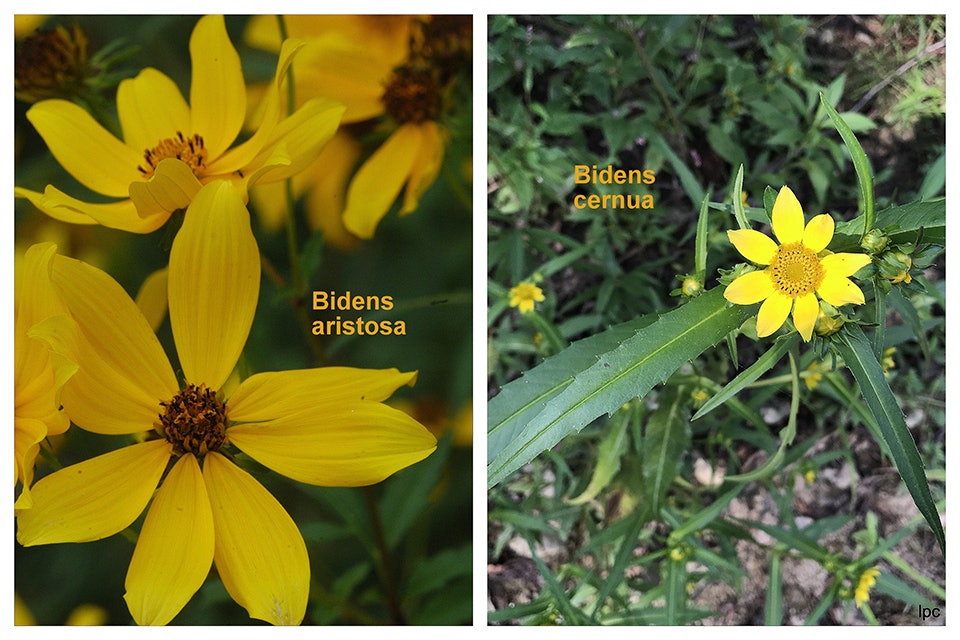
According to BONAP, nine Bidens species are native to Iowa. The most widely distributed are B. aristosa, B. cernua, B. frondosa, B. tripartita, and B. vulgata. However the last three do not have the colorful yellow petals seen on the B. aristosa and B. cernua. Their flowers literally have no petals though they still make little grabby awns. They all look similar to the one illustrated here when in bloom:

Another Bidens, B. trichosperma (Crowned Beggarticks), occurs in about 20 counties, but I do not see it here in Van Buren. However, according to Minnesota Wildflowers, it is very similar to B. aristosa except for the flower bracts.
B. aristosa is called at least ten different common names. Probably the most frequently used is Bur Marigold, though that epithet with modifiers is applied to most of the Bidens spp. Other common names for B. aristosa are: Bearded Beggarticks, Long-bracted Beggarticks, Long-Bracted Tickseed Sunflower, Swamp Marigold, Tick Seed, Tickseed Beggarticks, Tickseed Sunflower, Western Tickseed, and Yankee Lice. Whew—I hope that’s all.
But it really isn’t all, as there is the botanical name Bidens polylepis. Is it or is it not the same as B. aristosa? The 2014 BONAP maps do not contain entries for B. polylepsis. “Bidens polylepis is very closely related to Bidens aristosa and they are known to intergrade over a broad geographic range. Because of this, they have been combined as a single entity by some authors” as documented at Wikipedia. However, the Consortium of Midwest Herbaria does have separate descriptions and photographs of both.
Although very similar, a careful comparison of the bracts would tend to confirm that the Bidens I have seen growing in fields and by roads in Van Buren and Lee Counties and described and pictured here is B. aristosa (if there is such a distinction.) For more details on this difference of opinion, see Illinois Wildflowers or the Midwest Herbaria.
A field covered in bright yellow flowers that are not quite sunflowers about the end of August or first part of September is likely to be B. aristosa. Some examples follow. First, B. aristosa in a broad swath edging a field of Indian grass that has just begun to bloom.
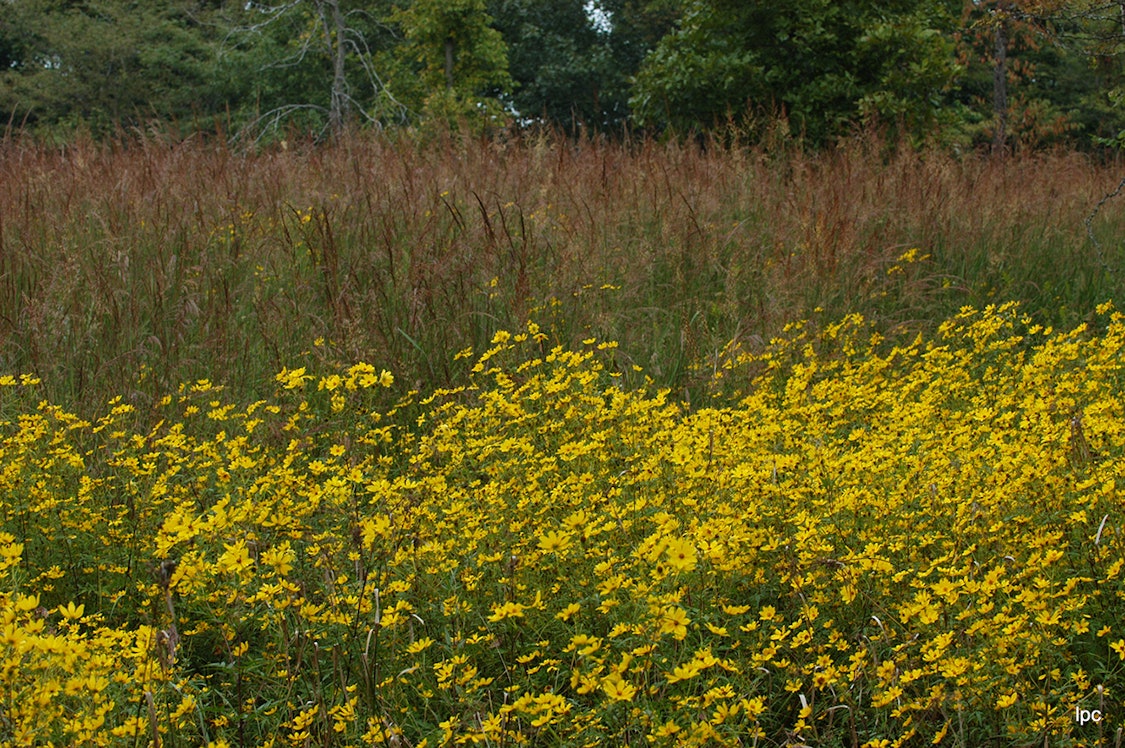
Or you may find it spread across a grass field right to the woodland edge (but not in it).
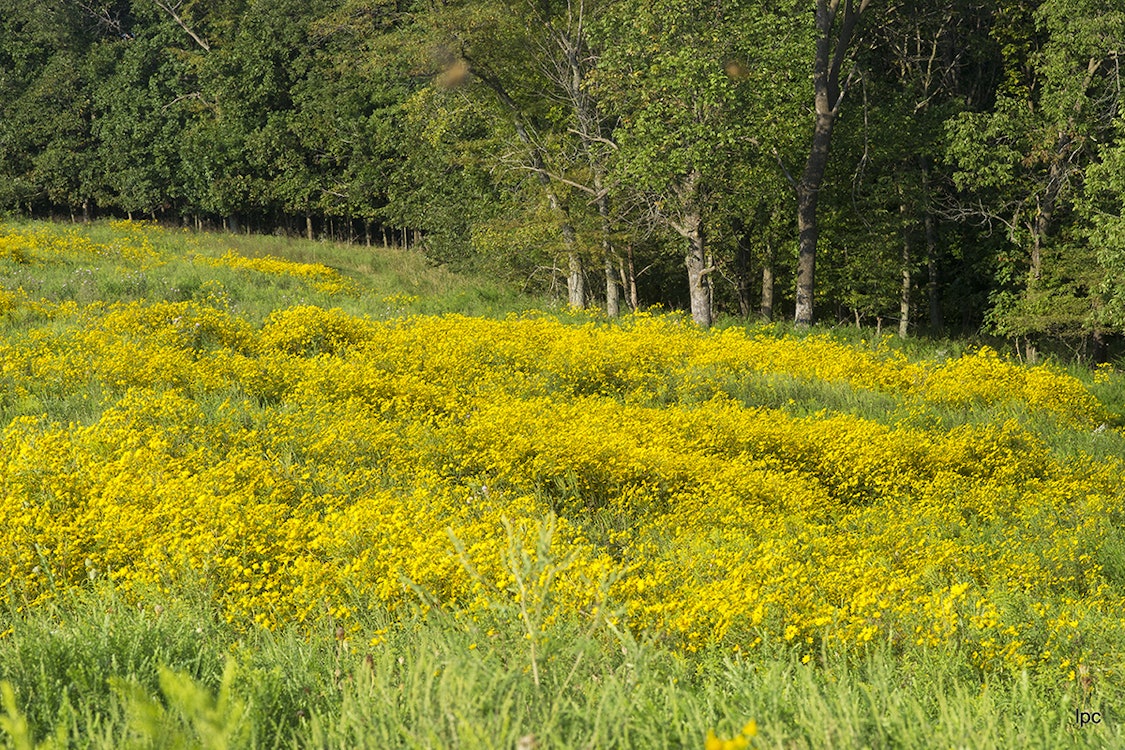
B. aristosa blooms freely along a gravel road in Shimek Forest.
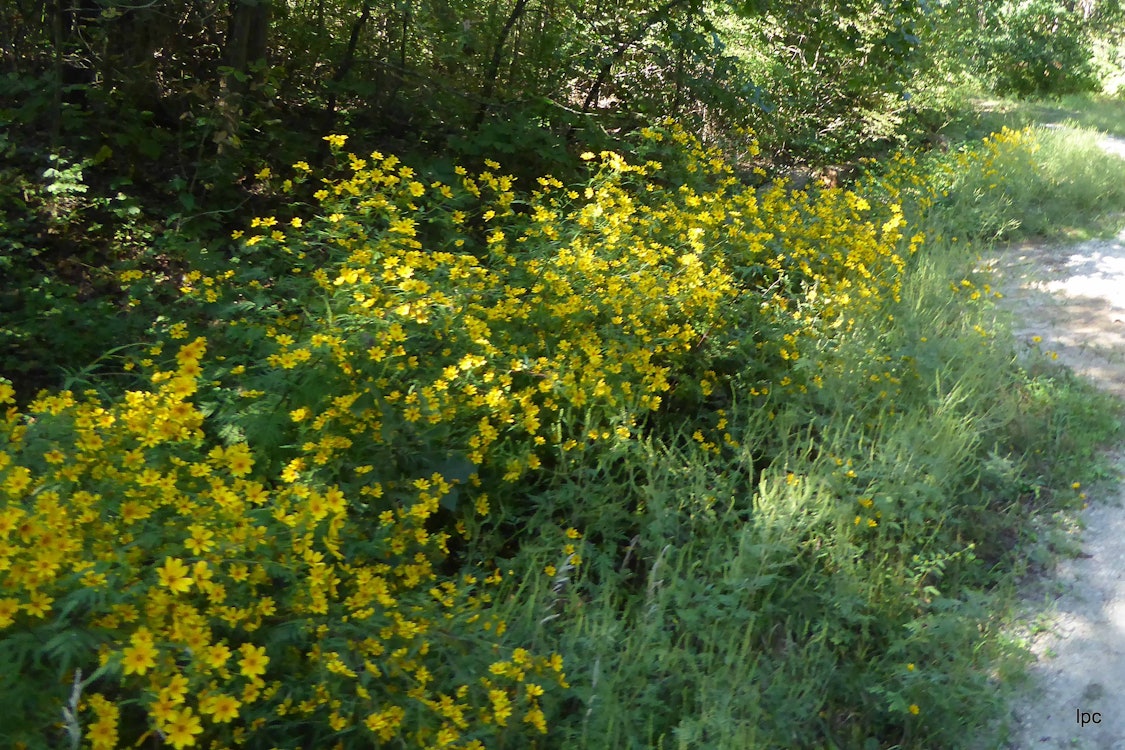
An excellent detailed botanical description of B. aristosa with accompanying photos is presented at Missouri Plants.
Key points illustrated in the photo below are: 8 golden yellow rays, 20 to 40 yellowish disc florets, leaves that are pinnate with 3 to 7 lobes, with individual blades that are lance-linear, single blades near the top, and stems that may be green or reddish.
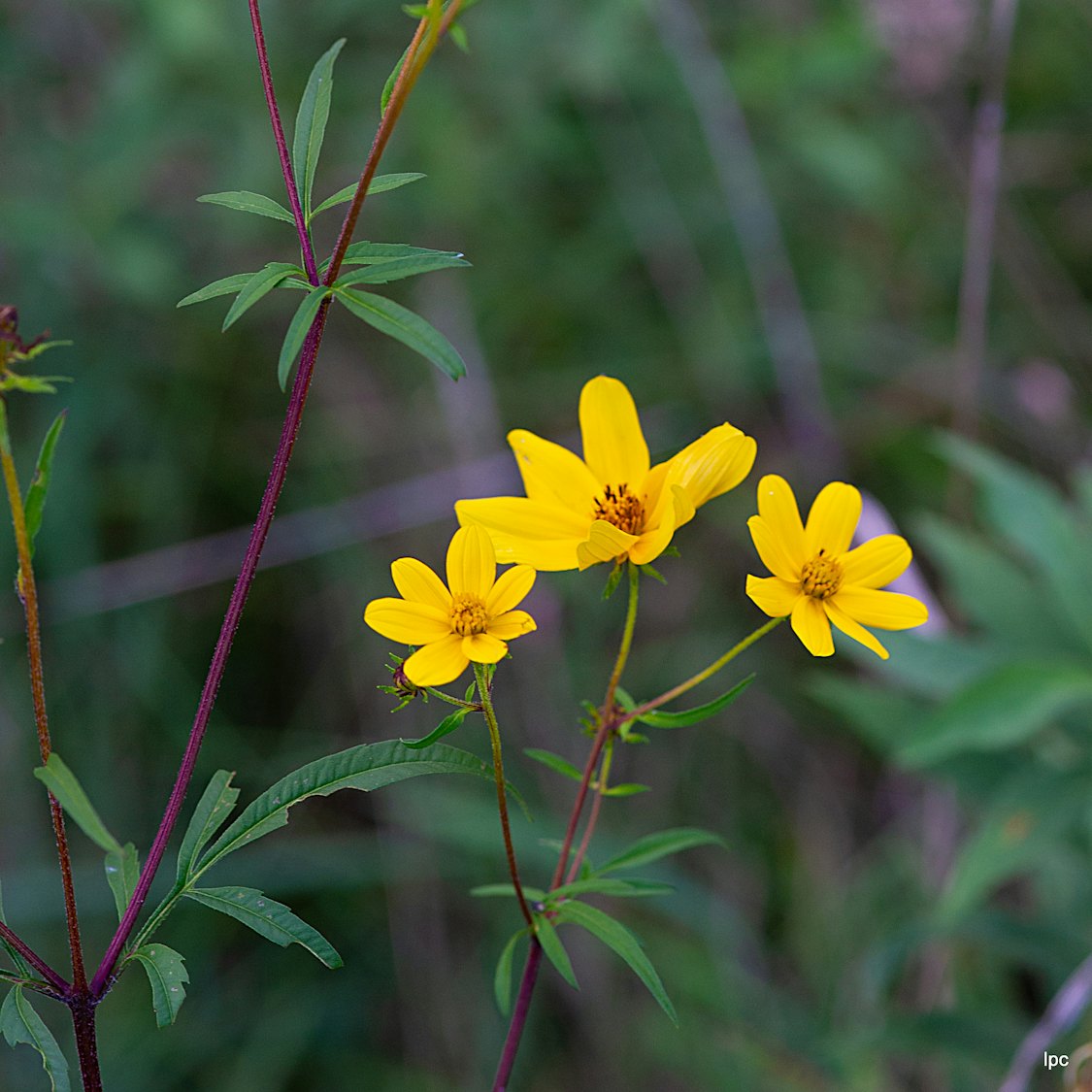
The photo below documents another characteristic: the flower bracts are pointed and somewhat curled or twisted. The Goldenrod Soldier Beetles find B. aristosa a very desirable habitat.
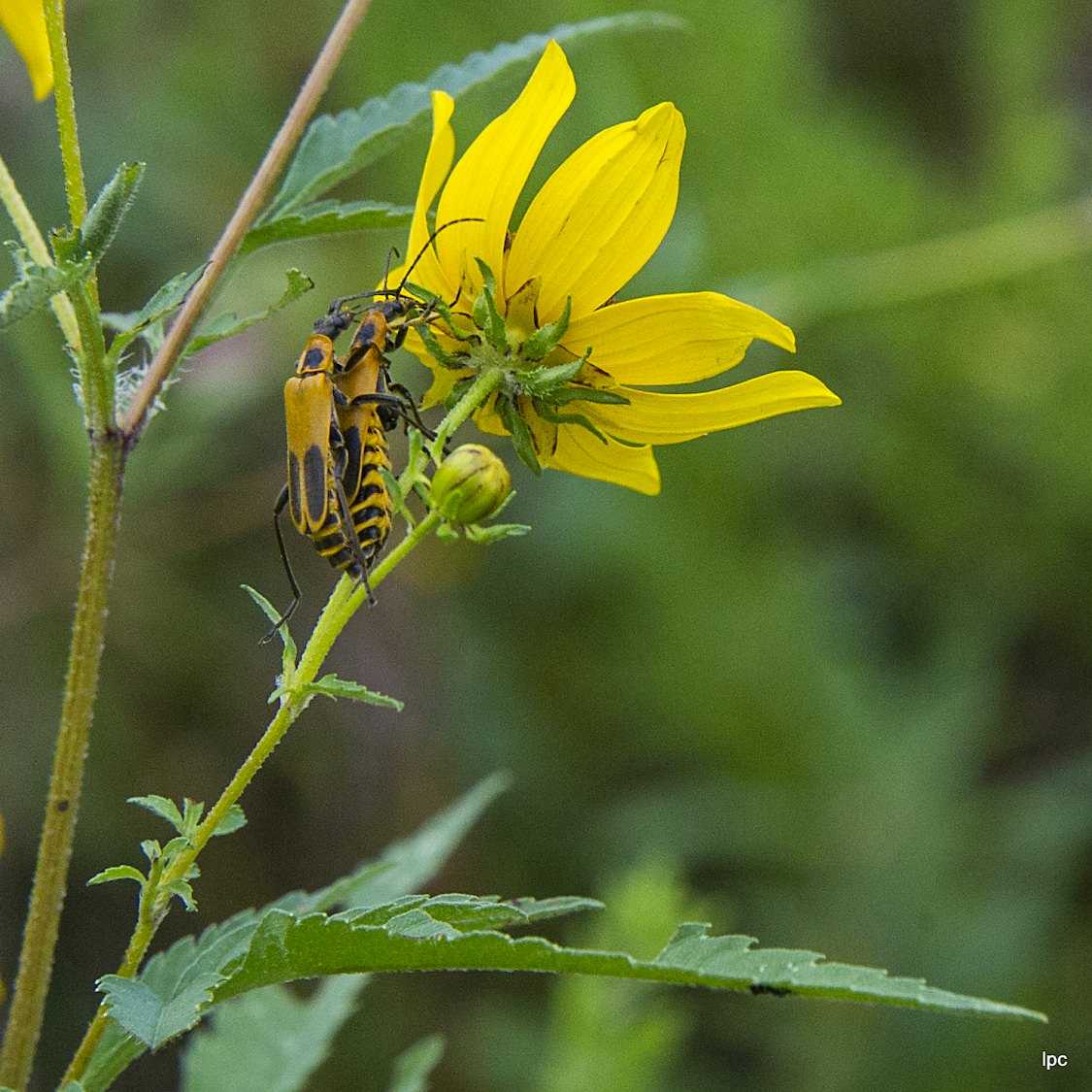
Another example with Goldenrod Soldier Beetles on the flowers and the 8 bright rays per flower.

Monarchs really enjoy them, especially when there are large multi-acre swaths of the flowers.
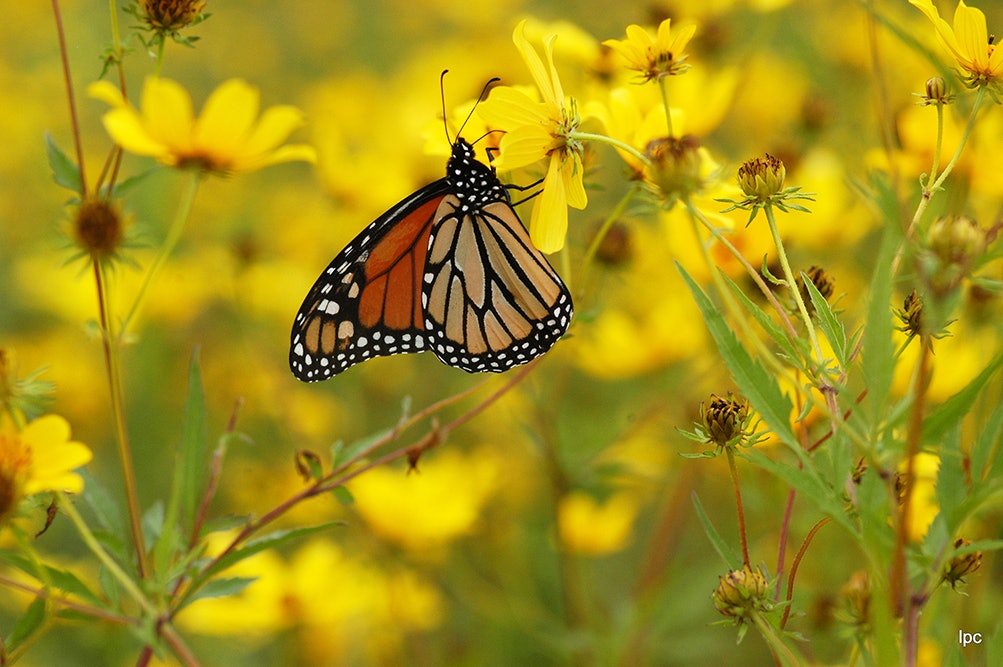
Bidens cernua is most often called either Nodding Bur Marigold or Nodding Beggarticks. It is found entirely adjacent to water—especially when the water level is down leaving a muddy edge that has been holding its seeds since the last dry period. Here it is shown blooming all along the edge of a pasture pond a few years ago. The water would have normally been right up to the base of the flowers.
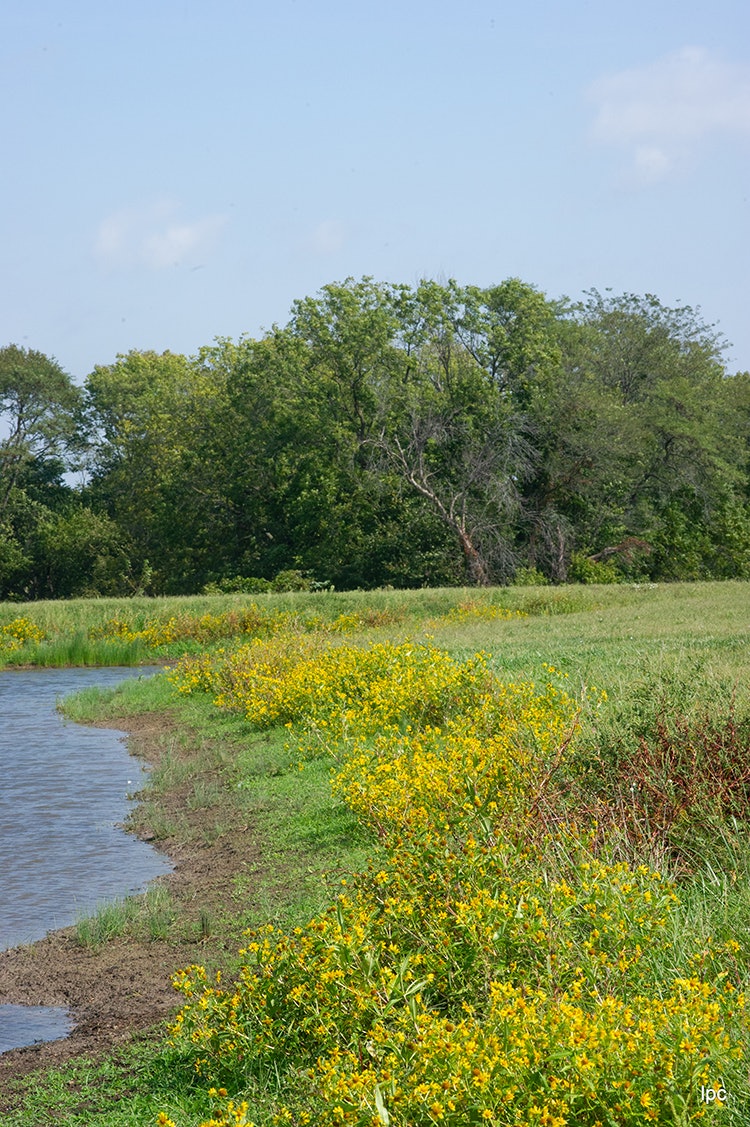
Here are B. cernua in 2023 growing on another pond bank. Where they are growing the water would typically stand. Very few would be blooming. Instead they were on all sides of the pond – many hundreds of them. Likewise, in 2023 they grew along the muddy remains of the Des Moines River, which was only about one-half its normal width, so that for miles they grew and bloomed along its banks, on the flat where water normally stood but was now only a muddy area.
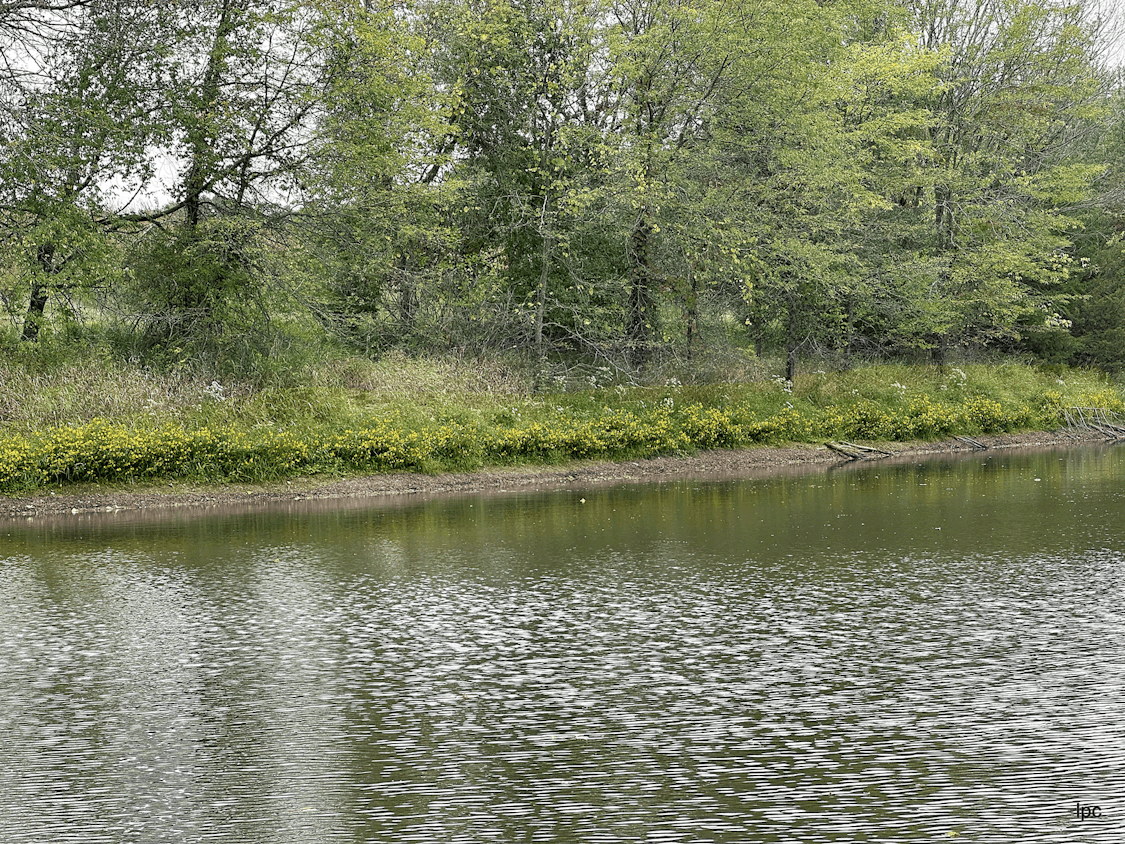
An individual plant specimen growing in the mud.
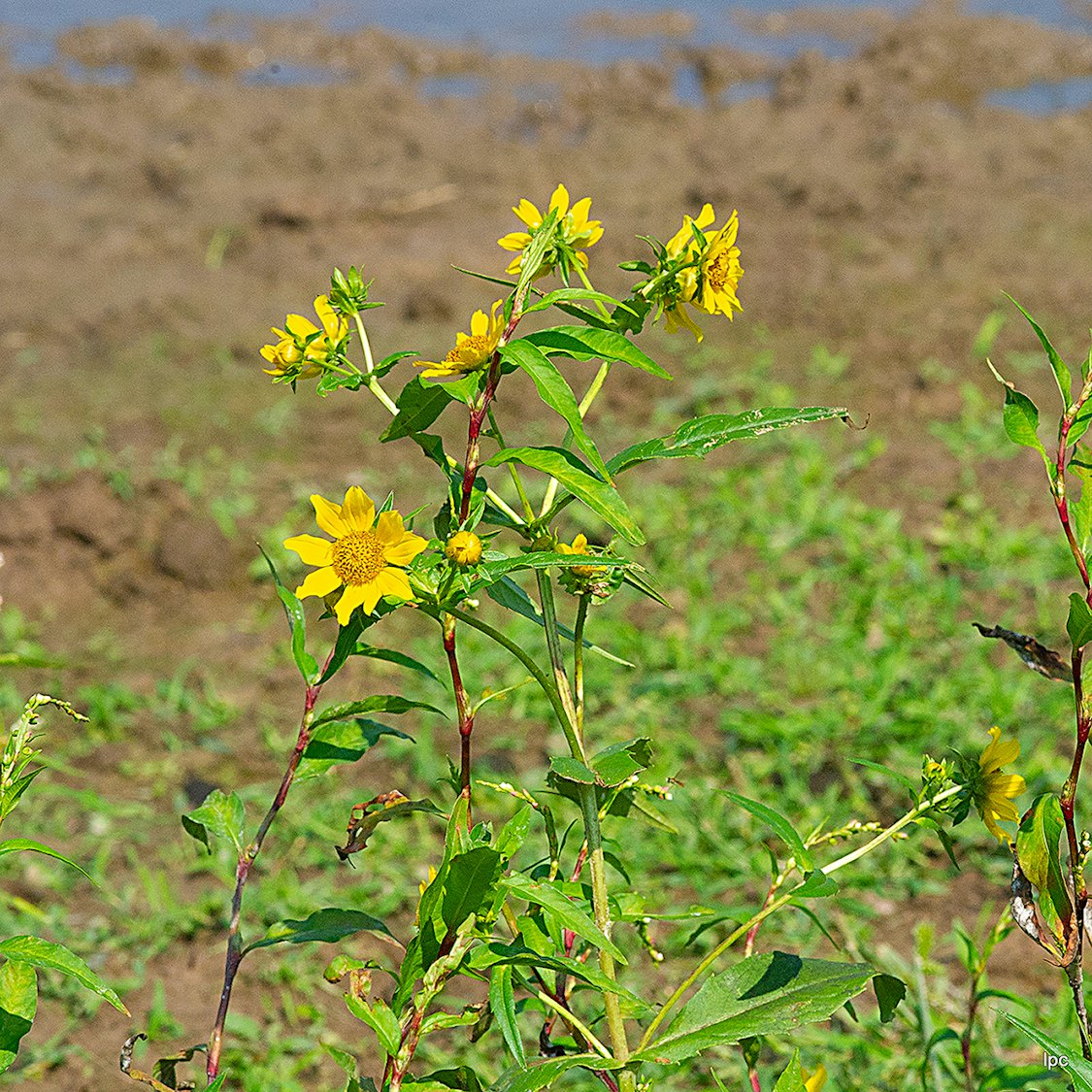
Like B. aristosa, the flowers have 8 oval yellow petals, but those of B. cernua are shorter than those of B. aristosa.
The center is a dull orange and appears larger than those of B. aristosa.
The next two photos illustrate this.

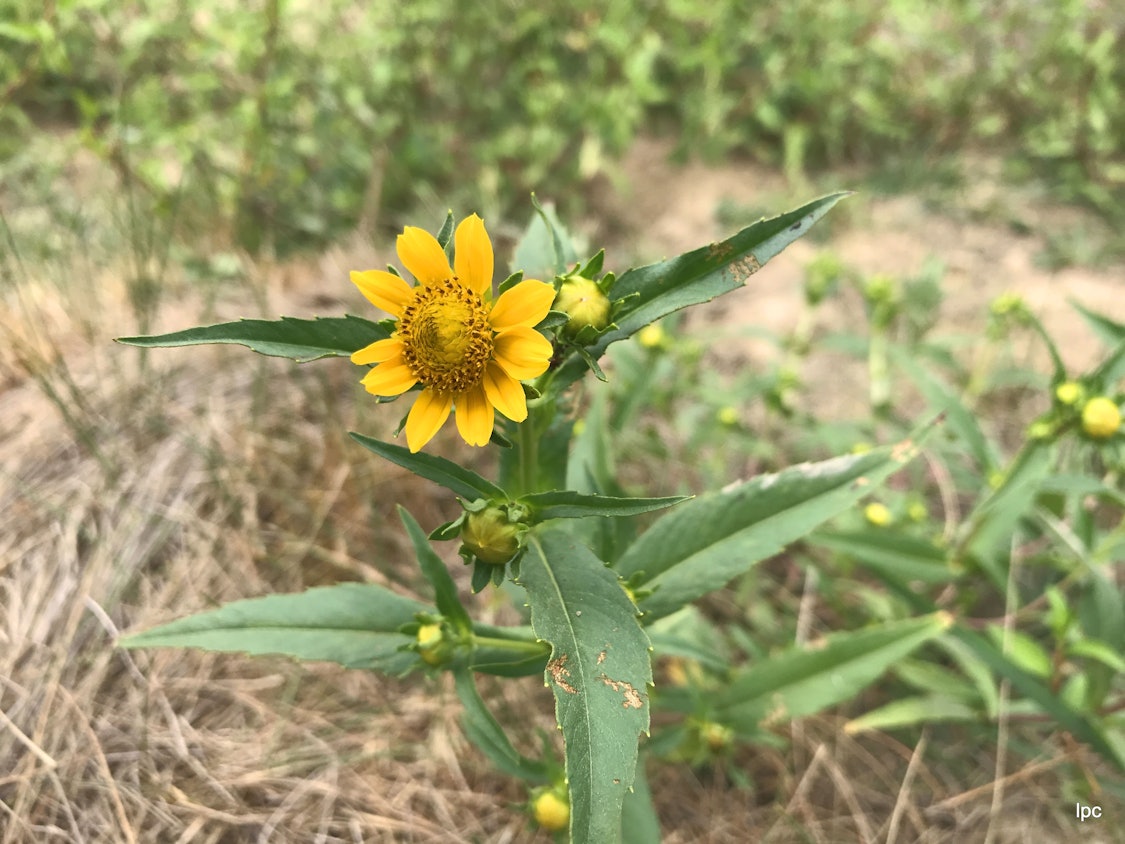
The narrow, long leaves that taper to a point, with toothed edges and NO LEAF STALK are illustrated in this photo. The leaves almost join at the stem with opposite attachment.

The blossoms are attractive to insects. Here are a pair of Hover flies on this one. The Goldenrod Soldier Beetles also like them as do many other flies, wasps, butterflies and bees. In addition, ducks sometimes eat the seeds of Bidens that grow near or in water.
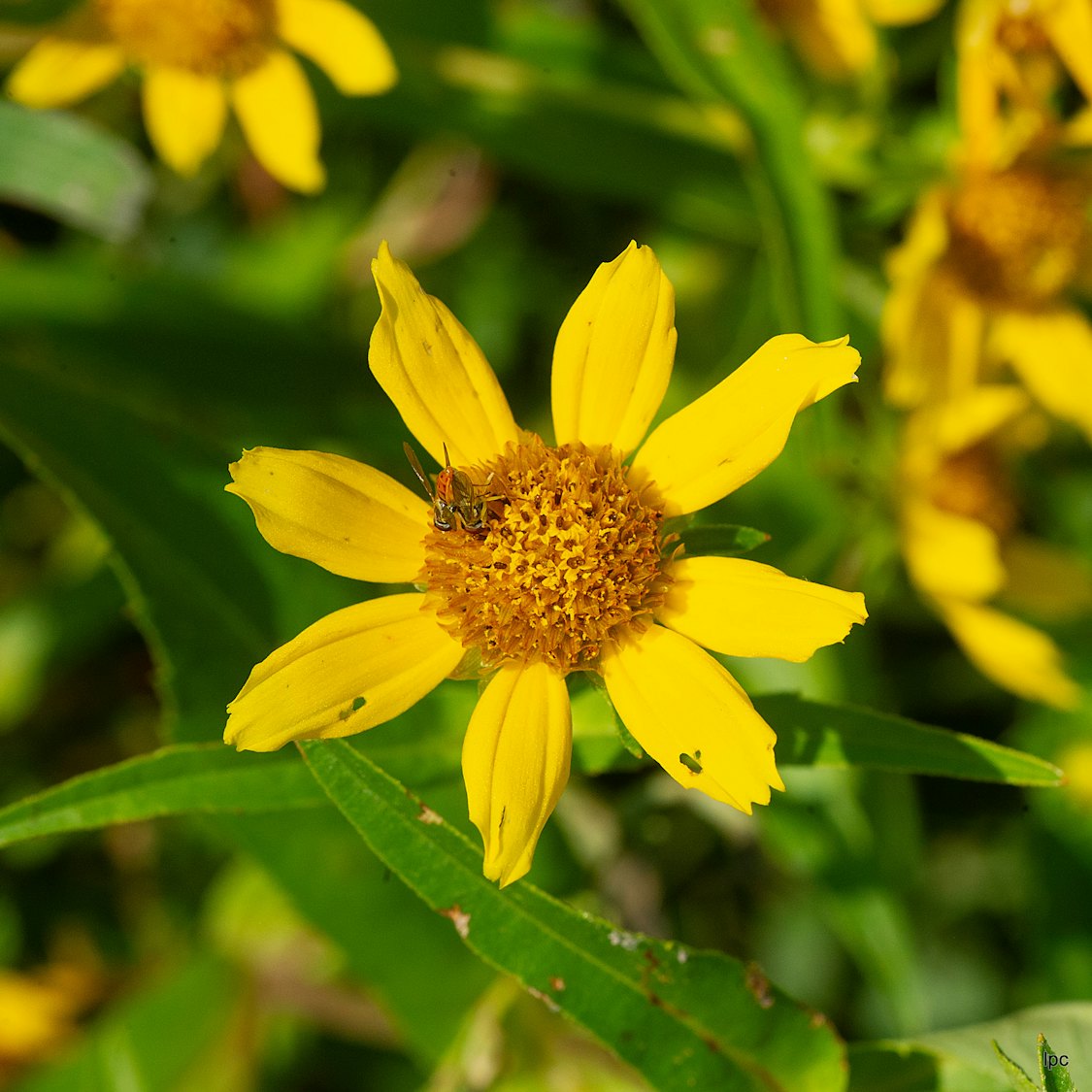
As they finish blooming and begin to form the awns, the plant takes on yellow and purple hues as the brown centers grow larger.

Numerous seed heads are completing their seed development in this photo.
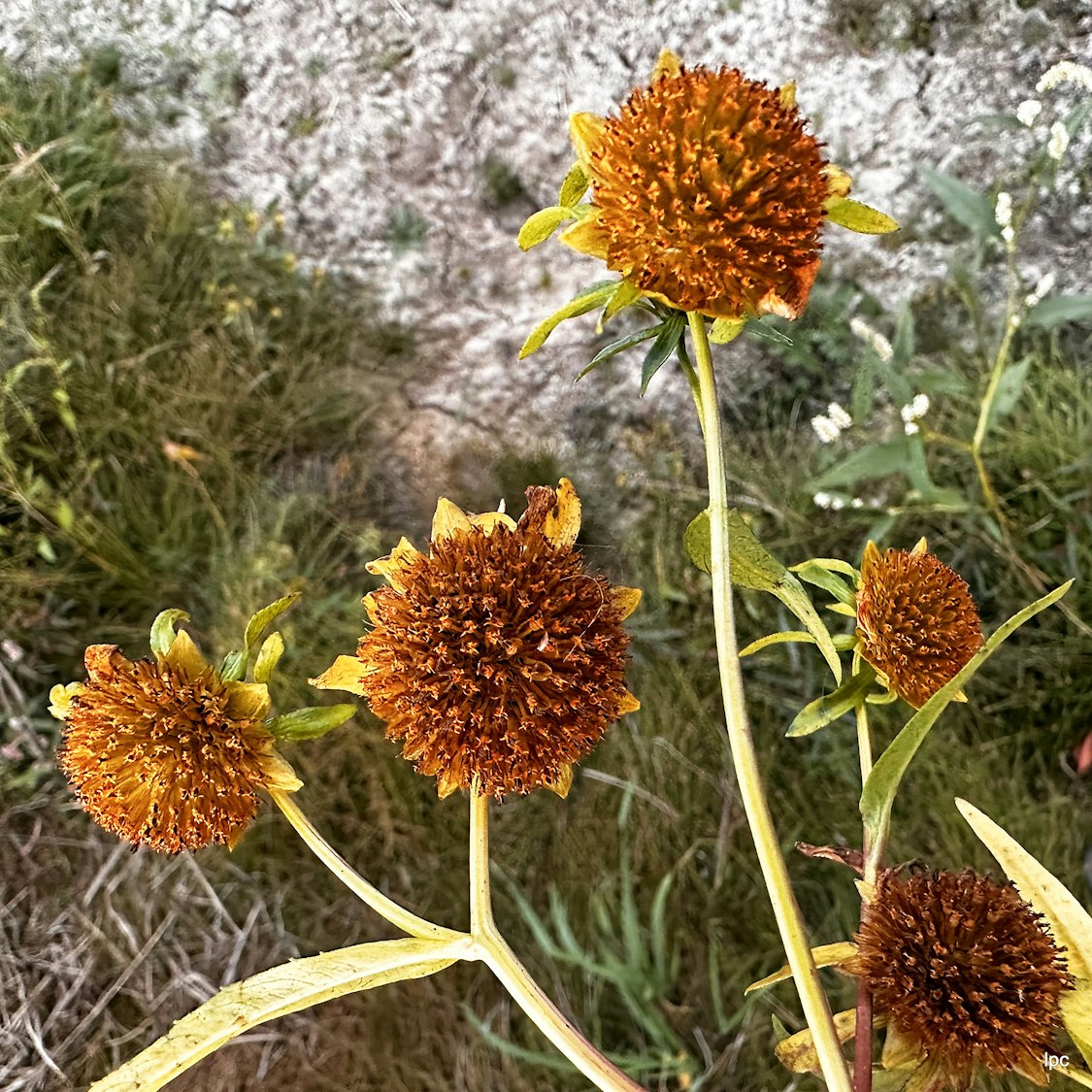
The Beggarticks. Most Bidens spp. develop awns—little barbed seeds for catching on clothes or fur that caused them all to be called “Beggarticks.” “Begging” a ride gets their seeds distributed about. Except for the number of spikes, the awns are similar for most all the Bidens family members. B. cernua awns illustrate this feature.
Here you see the seed heads of about 1 inch in diameter. (The board has inches marked off in eighths.)

An awn has been gently picked up higher for you to see how it sits in the flower head. The points of numerous other awns are already showing as well.

In the photo below the awn has been placed on the seed head and several others are lying beside it.
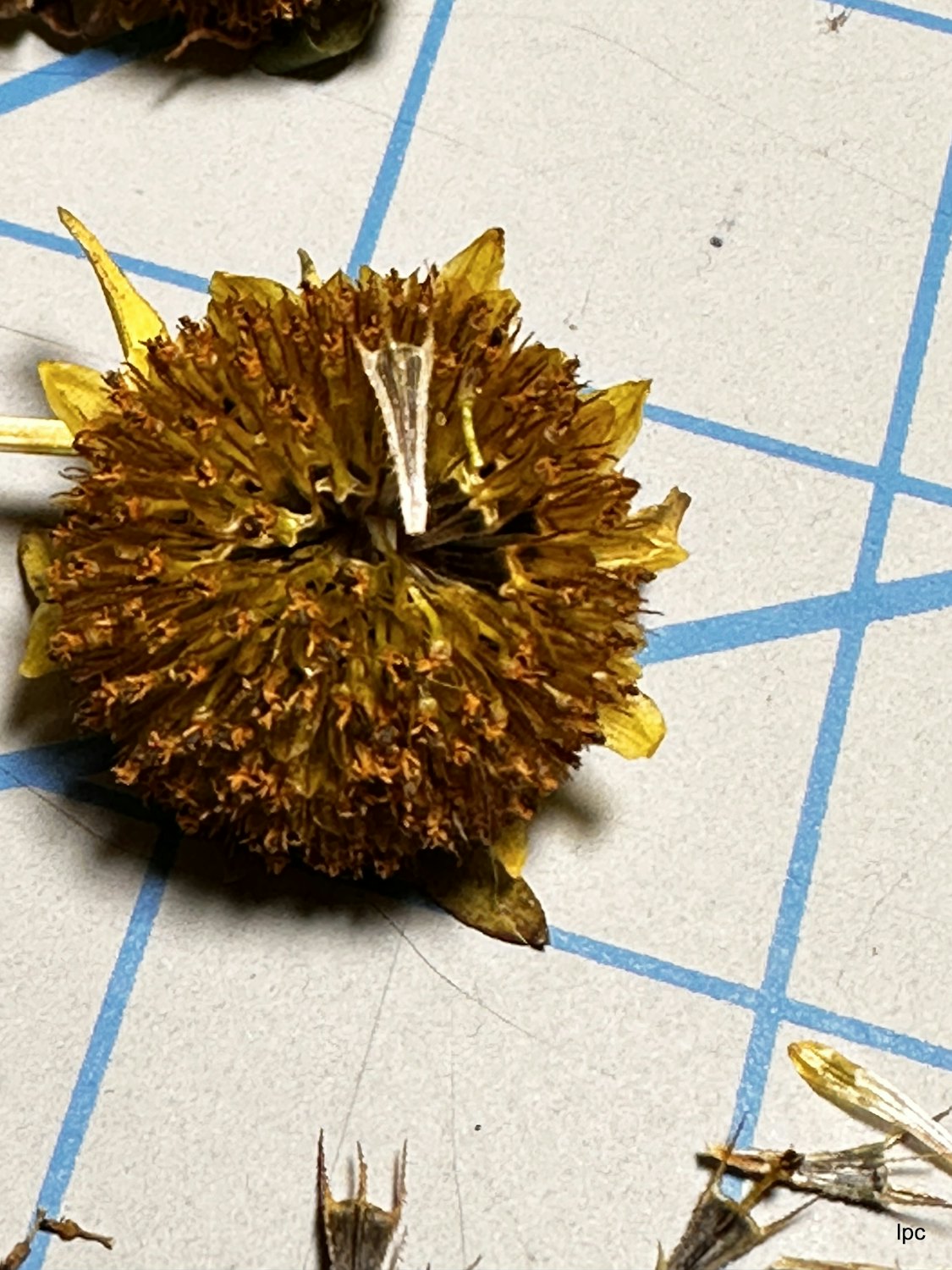
With this slightly less mature seed head torn, you can see the immature awns falling out.

Each awn is between 3/8 and ½ inch in length. The awns of the B. cernua have 4 barbs each—“all the better to nab you with, my dear.” The tiny crawling insect less than ¼ inch in length is an aphid. Several were inside the seed head. The awns of B. aristosa have only two barbs.
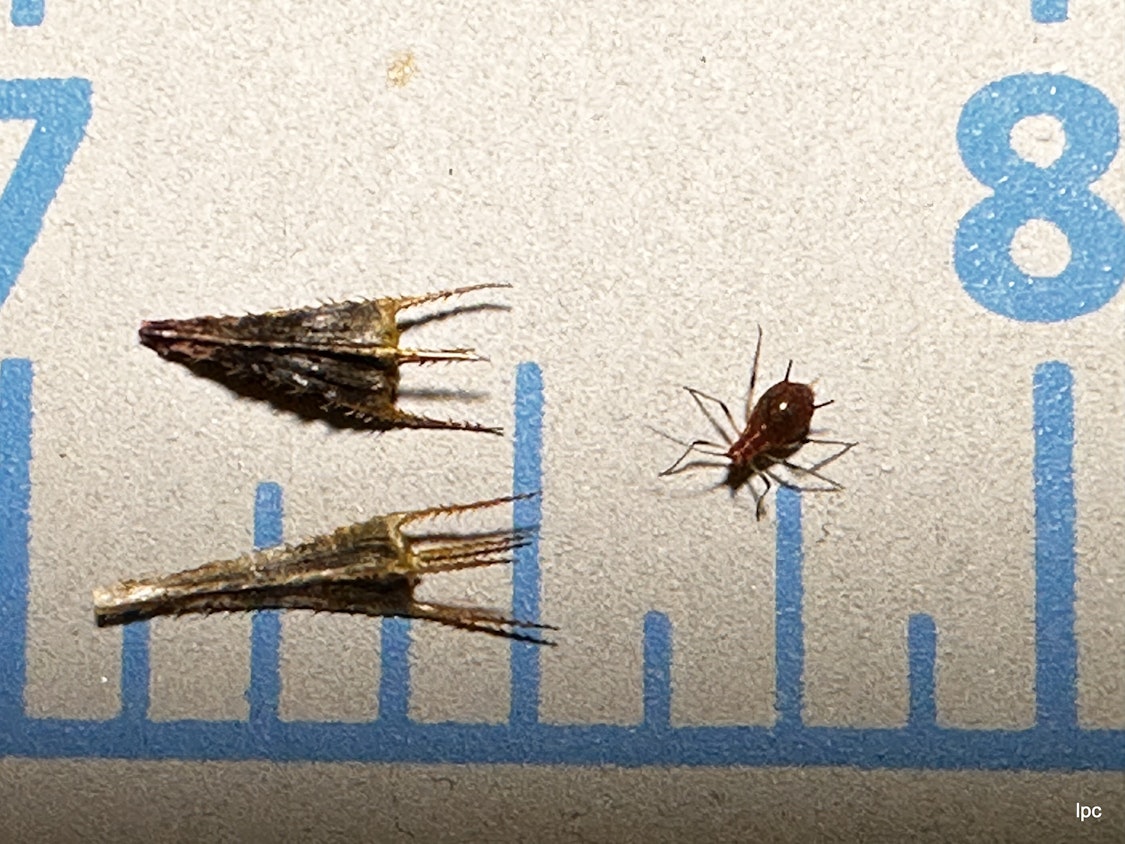
I’ve learned to appreciate them while blooming but to stay away after they finish blooming until nature takes them down.
Uses. At least one member of the Bidens genus, B. pilosa, has had widespread herbal and traditional medicine applications as documented at WebMD. More recent studies of several other species have highlighted possible anti-cancer properties for some. Bidens cernua is used medicinally to treat urinary-tract infections according to the Midwest Herbaria. I could find no such use documented for B. aristosa.
Both B. aristosa and B. cernua have significant wildlife value. Both are moderately resistant to damage from deer. The seeds are eaten by songbirds and ducks. Bidens spp. are a valuable resource for pollinators of all kinds. Honey bees, green bees, bumble bees, and others gather nectar and pollen from them. Wasps and hornets are also drawn to Bidens. Butterflies and moths also nectar on Bidens and the Dainty Sulphur caterpillars feed on them. I do not know if the geese actually ate any of them in this photo, where B. cernua are blooming on both sides of the pond, but they used the plants for sheltering and they both made the pond much more attractive.


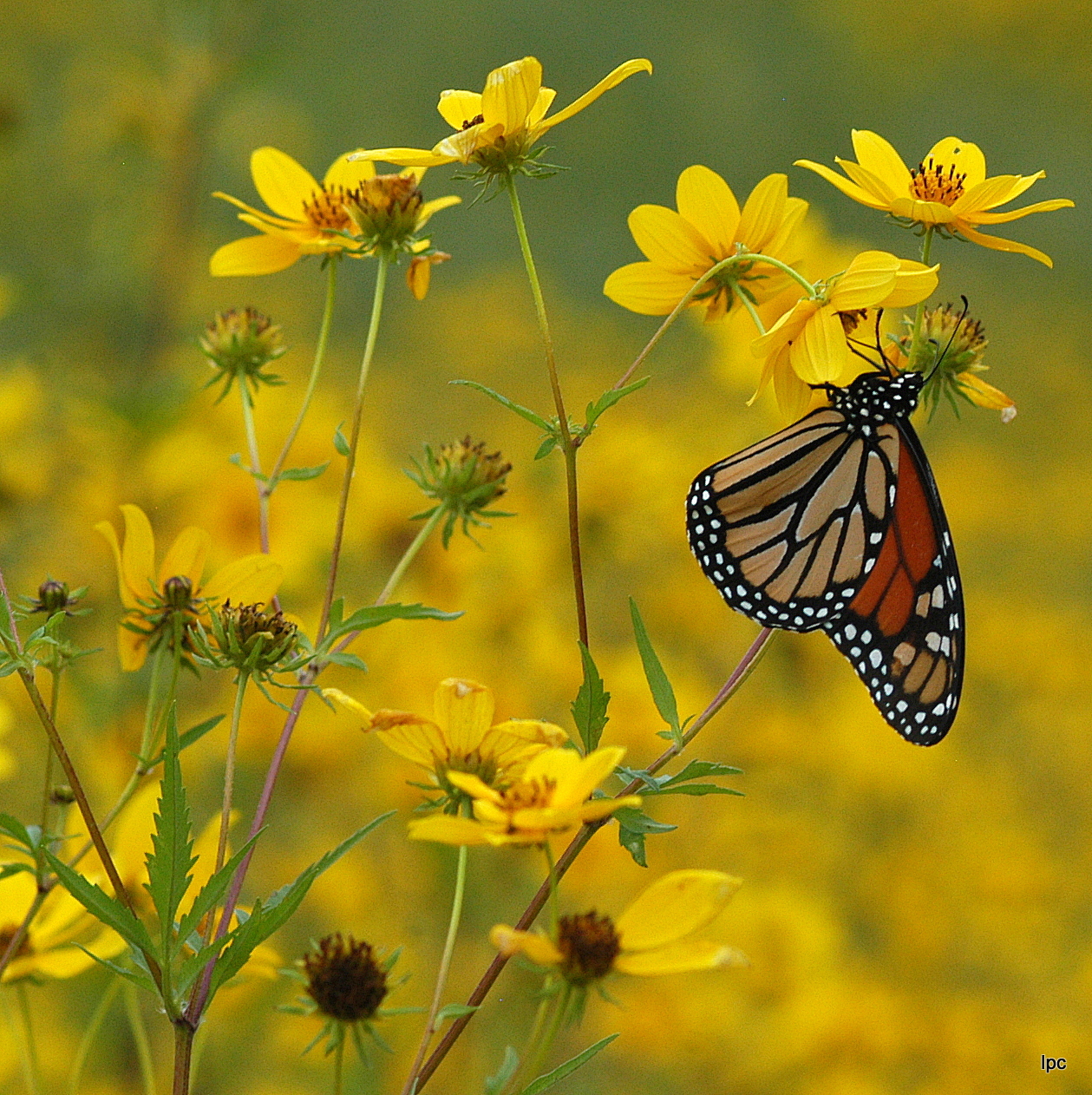
1 Comment
This is a really interesting post...
…especially the part about Bidens disappearing. I have seen that myself and was puzzled by it. Now I am inspired to try to do a little research and learn more about Bidens this winter. Thank you, Lora Conrad, and thank you, Laura Belin, for Iowa Wildflower Wednesdays.
PrairieFan Mon 20 Nov 8:39 PM